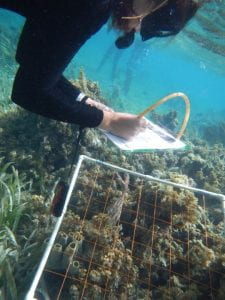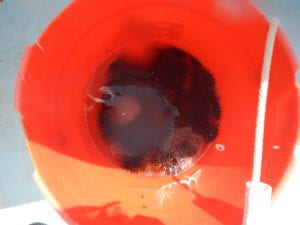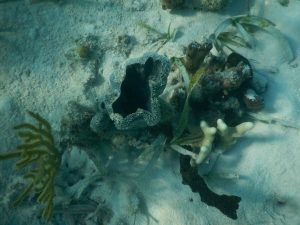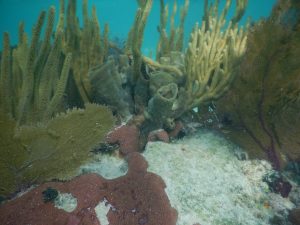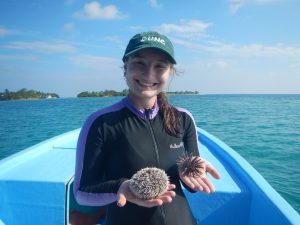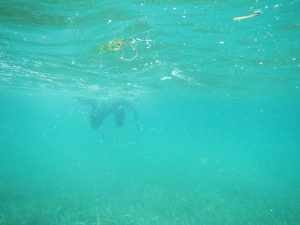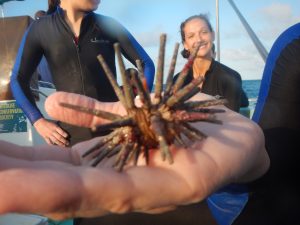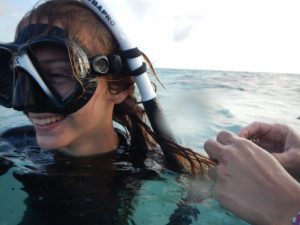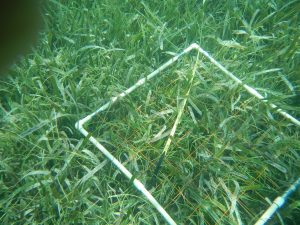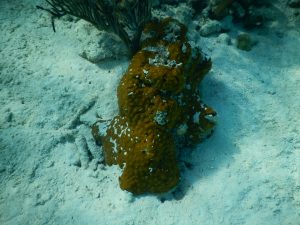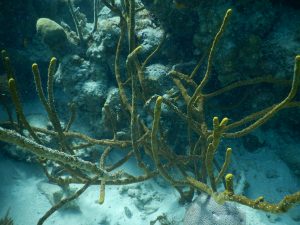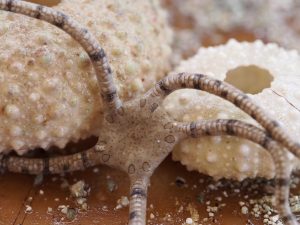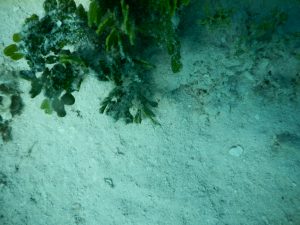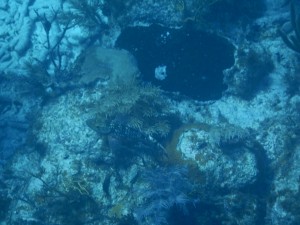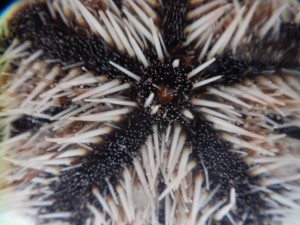After waking up with even more sand fly and mosquito bites on my legs, we went out to go to carry out some more TFB shenanigans. Continuing data collection for yesterday’s research question, we went out to two Marine Protected Areas to measure the dead vs alive coral found. It was beautiful as always (even though there was a significant amount of dead coral covered in macro-algae and disease…), and we collected sooo many urchin – 108 total between the two areas! There were also a ton of different echinoderms in the second MPA: lots and lots of Brittle Sea Stars, a Sea Biscuit, and a West Indian Sea Egg. Other people also saw some tunicates (aka Sea Squirts aka one of my taxon identifications) that were a blue-ish color!! I was also able to identify three different red algae throughout the day: Jania spp., Galaxuara spp., and lastly Amphiora fragilissima. It’s been really fun trying to see where they might show up and how they might vary depending on their location.
We then had some free time after lunch to work on our field notebooks until 4pm when we went out on an optional snorkel to explore the nearby reef crest. We snorkeled by the area that is after the absorption of the wave energy and got to see what happens with an exchange of the cold ocean water into the warm water of the Caye and a creation of drastic fluctuating temperature differences. Here, it was very much a macro-algae dominated area (tons of sargassum, Mermaid’s Fan, Amphiora fragilissima, white scroll brown algae, Mermaid’s Cup) and much of the coral was dead.

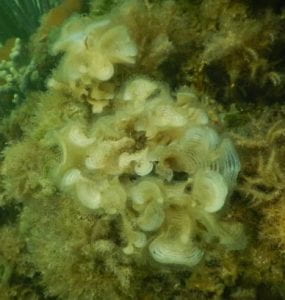
However, Dr. Correa was explaining that the groups of coral coral that were alive must be pretty resilient and are the coral that researchers are looking into to understand as to why/how they are able to survive these extremes. They can then take this information and apply it to other coral (genetically evolve them, etc.) to try to make them more resilient to drastic temperature changes and hopefully save more corals from climate change.
For the rest of the night after dinner we were lucky enough to have two guest speakers: one from the Belize Fisheries Department and one from the Belizean Coast Guard. They informed us on their roles within Belizean waters and within Glover’s atoll, especially with illegal fishing, enforcement of marine laws, and protecting the reefs. They all play such an important role in preserving the reefs and educating fishermen as to how they can continue their livelihood but in a sustainable way. Hopefully so both parties can coexist with a positive outcome and many sustainable habits that will help these waters stay as healthy for as long as they can.
– Sophia

